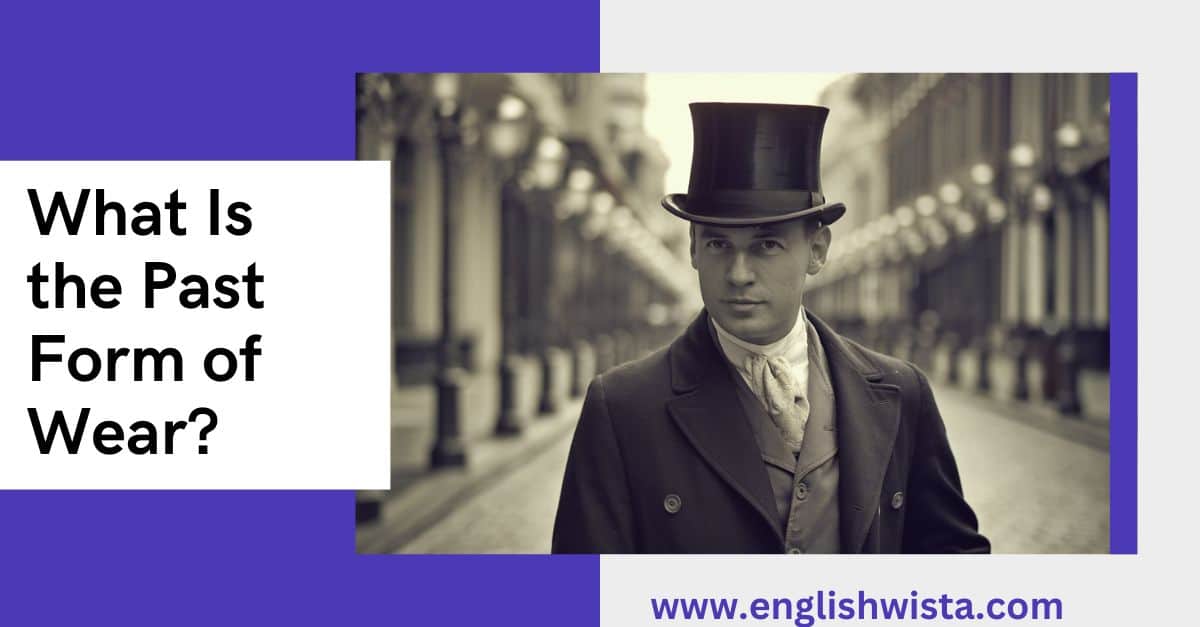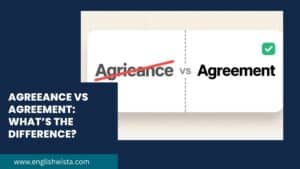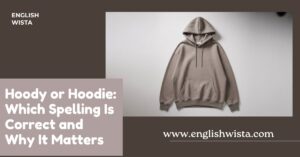Have you ever wondered what the past form of wear is? Maybe you’ve come across it while reading or writing and weren’t quite sure. Don’t worry—you’re not alone! Understanding verb forms can sometimes feel tricky, but once you know the basics, it’s a piece of cake. Let’s dive into the past form of “wear,” explore how to use it, and have a little fun along the way.
What Is the Past Form of Wear?
The past form of the verb wear is wore. That’s it—just one simple word! While “wear” refers to something happening in the present (like wearing a hat), “wore” tells us the action already happened.
For example:
- Present: I wear my favorite jacket every winter.
- Past: Yesterday, I wore my favorite jacket to the park.
See how easy that is? By switching from “wear” to “wore,” we move from talking about now to talking about the past.
Why Is It Important to Know the Past Form?
Using the correct verb form helps your sentences make sense. Imagine saying, “I wear a coat last night.” It sounds a little strange, doesn’t it? That’s because “wear” doesn’t match the time (past). Using “wore” fixes the problem:
- Incorrect: I wear a coat last night.
- Correct: I wore a coat last night.
By learning past forms like “wore,” your English will sound natural and fluent!
What About the Past Participle of “Wear”?
Here’s another important detail: The past participle of “wear” is worn. While “wore” is used for simple past tense, “worn” often appears with helping verbs like “has,” “have,” or “had.”
Examples:
- Simple Past: She wore a beautiful dress to the wedding.
- Present Perfect: She has worn that dress before.
- Past Perfect: She had worn the dress many times before donating it.
Remember:
- Use wore when describing a completed action in the past.
- Use worn when combining with helping verbs to describe an action’s connection to the present or past.
Real-Life Examples of “Wear,” “Wore,” and “Worn”
Let’s look at some examples to see these forms in action:
- Present (Wear): I wear sunglasses when it’s sunny.
- Past (Wore): I wore sunglasses at the beach last weekend.
- Past Participle (Worn): I have worn those sunglasses for years.
Notice how the verb changes depending on the sentence? It’s like a puzzle where everything fits perfectly when you choose the right form.
Common Mistakes to Avoid
Even fluent speakers make mistakes sometimes! Here are a few common errors and how to fix them:
- Mixing up “wore” and “worn.”
- Incorrect: She worn a scarf yesterday.
- Correct: She wore a scarf yesterday.
- Using “wear” instead of “wore.”
- Incorrect: I wear my uniform to work yesterday.
- Correct: I wore my uniform to work yesterday.
- Forgetting the helping verb with “worn.”
- Incorrect: I worn this jacket before.
- Correct: I have worn this jacket before.
Where Does the Word “Wear” Come From?
The word “wear” has an interesting history. It comes from Old English werian, which means “to clothe, put on, or cover.” Over time, the word evolved into the modern verb we use today.
Fun fact: The word “wear” isn’t just about clothing! It can also mean “to erode” or “to endure.” For example:
- The waves wore away the rocks.
- This old chair has really worn out over the years.
Tips for Remembering Verb Forms
Learning verb forms like “wear,” “wore,” and “worn” can feel challenging, but these tips can help:
- Practice with Sentences: Write a few sentences using each form. For example:
- I wear my watch every day.
- I wore it yesterday.
- I have worn it since I bought it last year.
- Create Flashcards: Use flashcards to test yourself on verb forms. Write “wear” on one side and “wore/worn” on the other.
- Use Mnemonics: Make up a rhyme or story to help you remember. For example: “I wore it before; now it’s worn for sure!”
Fun Facts About “Wear”
- Did you know? The phrase “wear and tear” refers to the damage something gets from regular use. It’s often used when talking about cars, furniture, or appliances.
- The word “worn” is often used in idioms like “worn out” (meaning tired) or “well-worn” (meaning something used a lot).
Quick Recap
Here’s a handy summary to keep in mind:
- Present tense: wear (I wear a hat.)
- Past tense: wore (I wore a hat yesterday.)
- Past participle: worn (I have worn this hat many times.)
By using these forms correctly, your English will sound smooth and natural.
Conclusion
So there you have it—the past form of wear is “wore,” and the past participle is “worn.” With a little practice, these forms will become second nature. Remember to use “wore” for simple past sentences and “worn” when paired with helping verbs.
Next time you’re writing or speaking, think of these examples and tips. You’ve got this! Keep practicing, and soon you’ll be wearing your new language skills like a pro.



